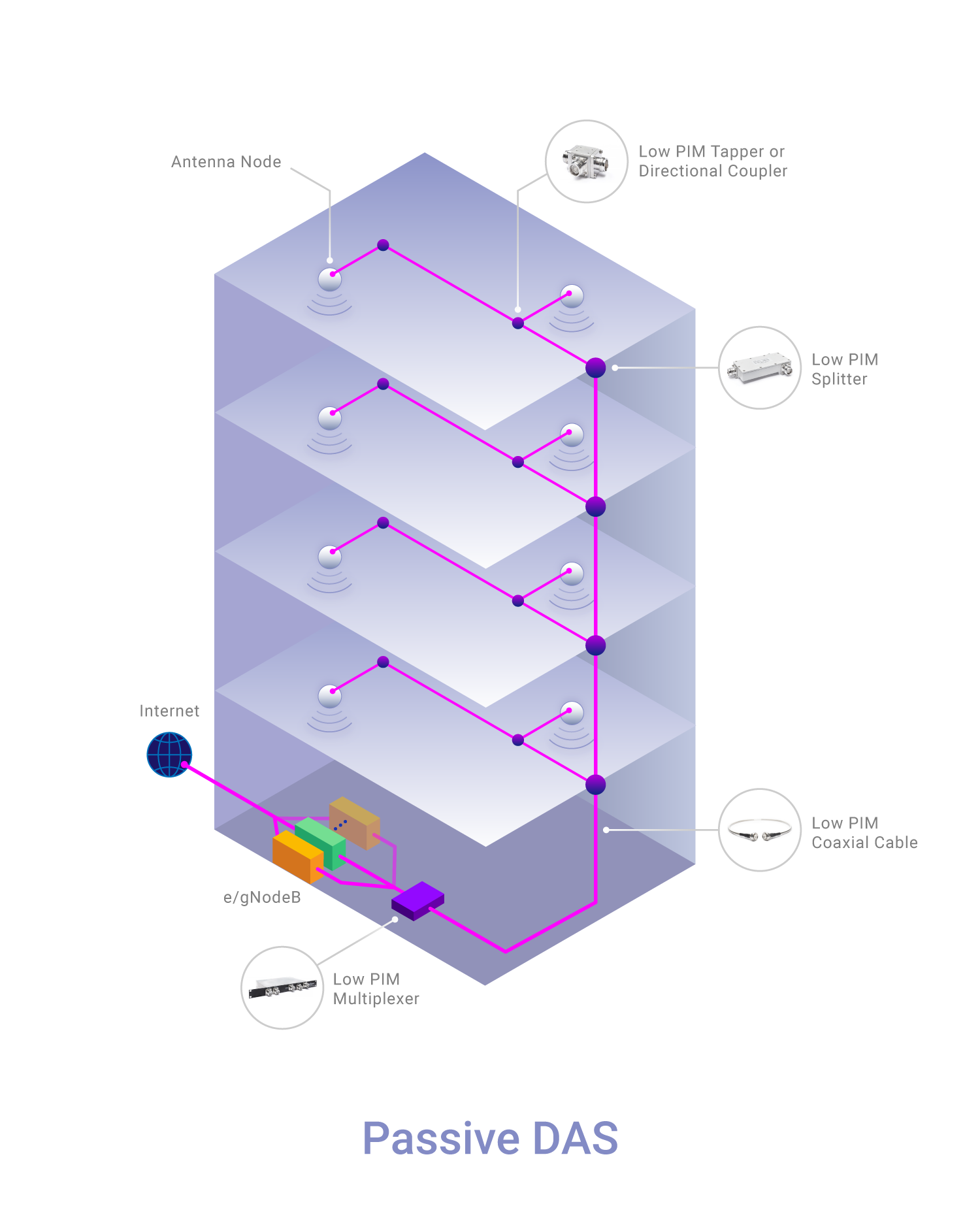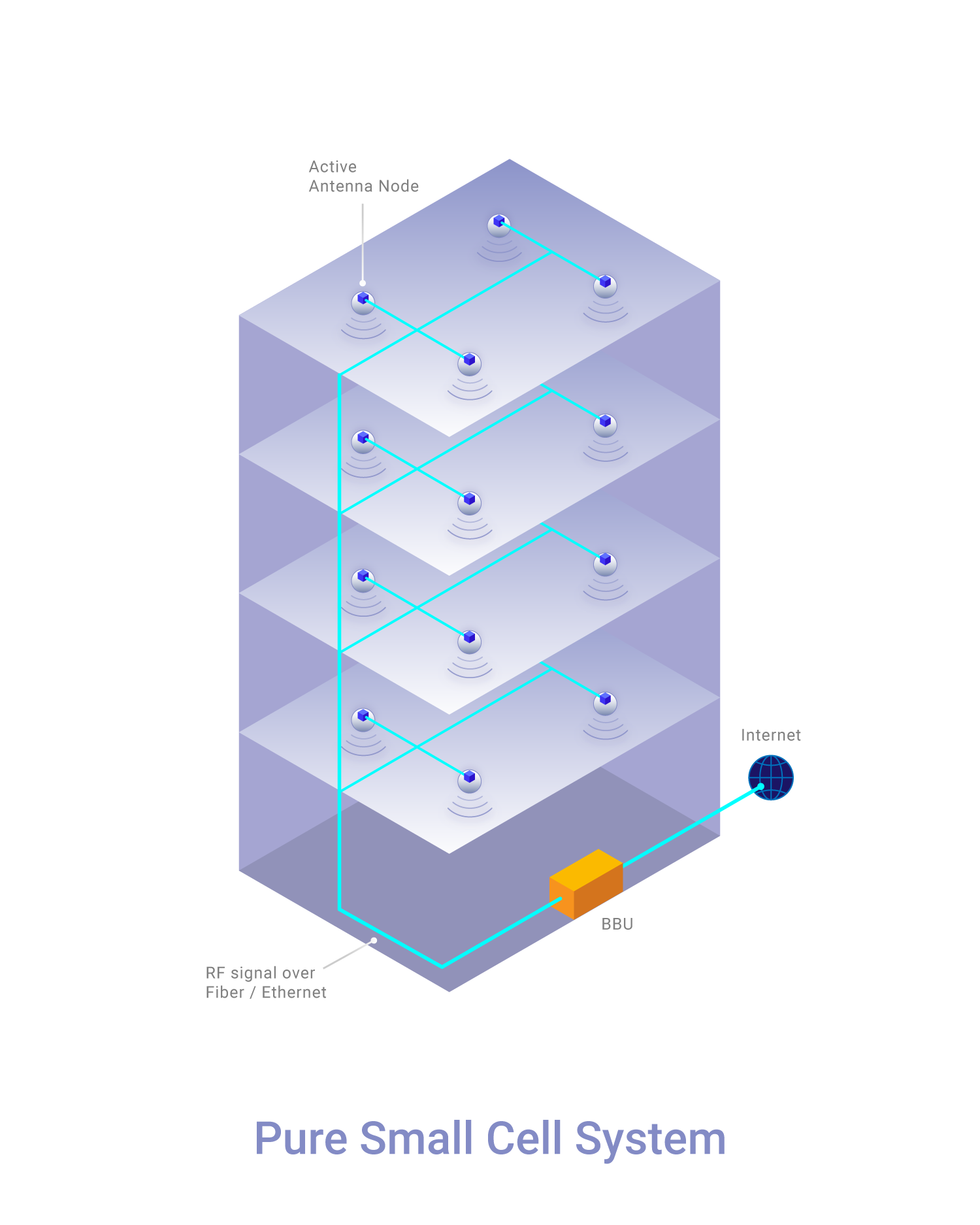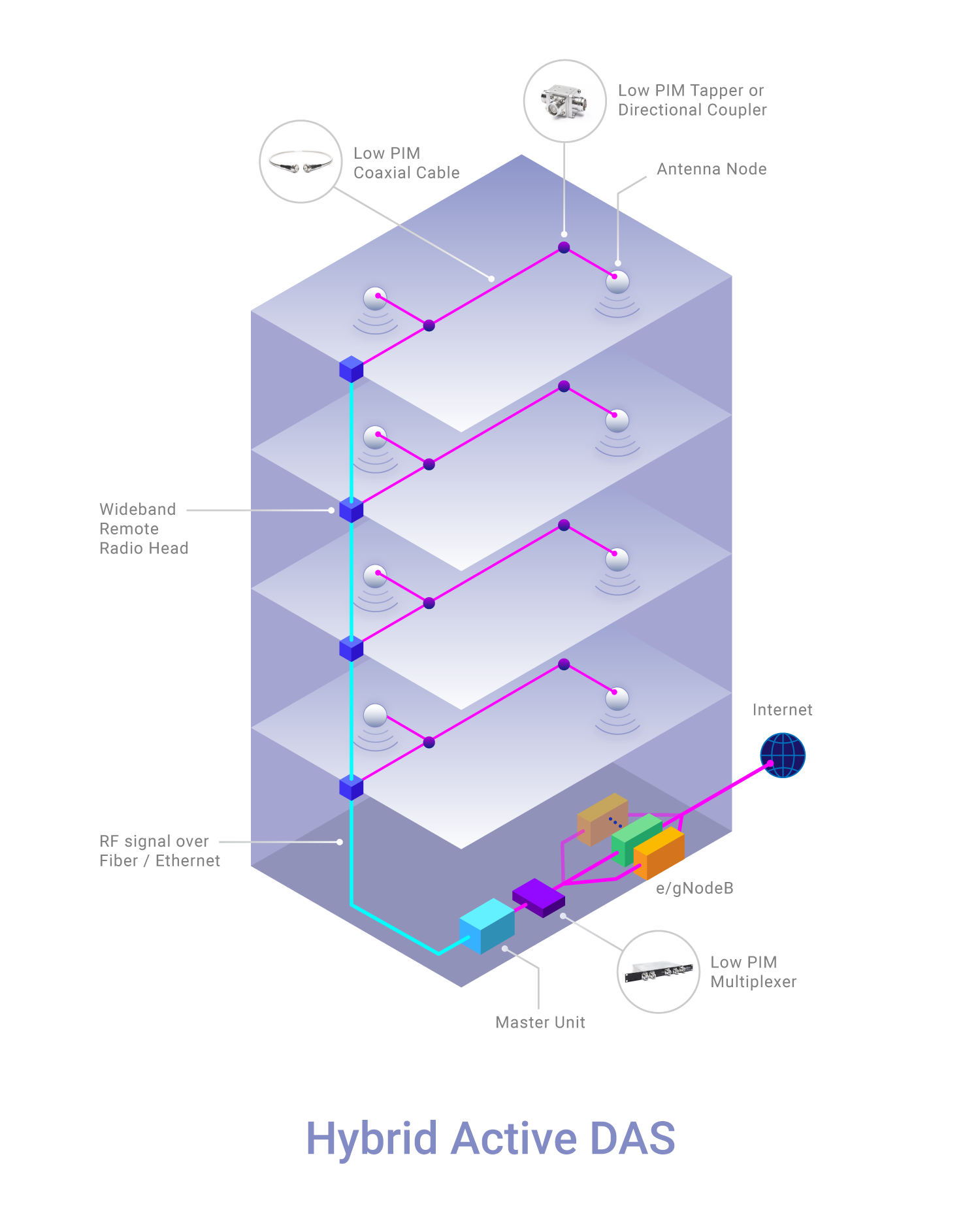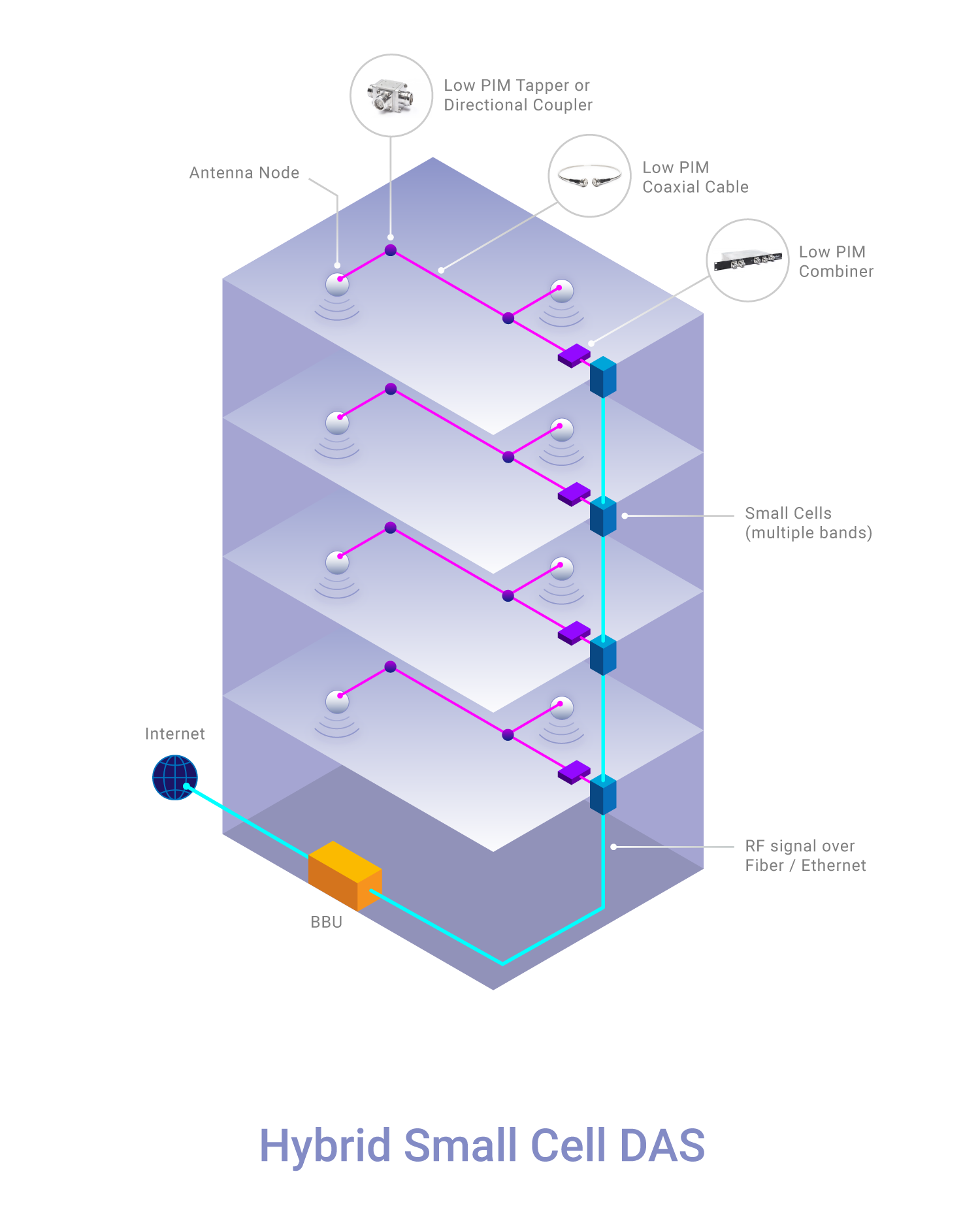
Guide to 5G DAS Systems Part 2: Small Cells and Hybrid DAS Solutions
Small Cell Deployments
There are several benefits to a small cell deployment. The PIM issues that plague traditional passive DAS installs are no longer present. Power and distribution systems are replaced with ethernet-over-power. Long, thick and expensive RF cables that can complicate installations are replaced with fiber or ethernet infrastructure. And with faster, simpler architecture for RF signal distribution, the upfront capital cost savings can be significant.

A simplified deployment model will make it easier to test, and with less technical complications, field failures drop considerably, making it an obvious favourite for carrier network operators. Small cells can save installers a considerable amount of upfront cost but the maintenance requirements for small cell upkeep – adding additional bands – comes with a major drawback. Over the course of the building life cycle, the financial implications and the associative technical complications to maintain upgradeability can become a major factor when designing an in-building solution.

Small Cell Shortcomings: Adding more Bands... like 5G
Small cell deployments present maintenance challenges because they are not wideband solutions. Adding additional bands and/or carriers (and their associative bands) in the future requires additional small cell deployments for multi-carrier operated buildings, which can complicate and increase the upkeep cost of an in-building solution.
Consider a Canadian example where there are four major mobile network operators (Telus, Bell, Rogers, and Freedom Mobile) with 3 – 4 current operating bands:
- 4 operators (bell/telus, rogers, freedom mobile, videotron)
- Each carrier has four bands to manage (PCS 850/750), 1900, AWS, and 2.6GHz)
- CBRS and 700MHz are additional spectrum bands that need to be also considered in the future
- Assuming just 4 bands per operator, this equates to 12 separate small cell deployments (3 bands x 4 carriers) that need to be installed for each floor of an in-building solution
With the introduction of 5G spectrum bands, neutral property owners can be faced with maintenance headaches if a pure small cell solution is deployed. On the other hand, a traditional passive DAS system can add 5G requirements by adding and combining the new bands at the source. Installers would only need to ensure that they are using extra low PIM components with wideband attributes to cover the band upgrade and manage potential PIM issues.

Deploying multiple small cell networks in dense proximity can also produce interference issues that can compromise the signal quality. The noise floor can be raised, which is caused by outband emissions. With increased density of small cell deployments, diode components in small cells, if facing each other, can produce PIM issues.
Despite these limitations, there are alternative solutions. A hybrid system, which uses both small cell systems and traditional passive DAS systems, could be designed to leverage the advantages of both architectures to offer a solution.
The Hybrid DAS Solution
One of the major benefits of a small cell deployment is the simplified distribution system. Hybrid DAS solutions use a fiber or ethernet distribution system and a mini wideband DAS solution to serve the ‘last mile’ or ‘floor’ of a multi-story building. Using a hybrid DAS solution allows installers to leverage the cost and deployment benefits of a small cell solution while also enabling operational and maintenance benefits with a mini-DAS solution for floor distribution, provided that the passive DAS system uses low PIM and wideband network components.
There are two architectures, a Hybrid Active DAS or Hybrid Small Cell DAS solution, that are used today. In both cases, fiber or ethernet infrastructure is deployed to manage RF signal distribution throughout the building.


The major difference between these architectures is the use of one or two vendors to deploy the solution. A Hybrid Small Cell Solution utilizes only one vendor for source and distribution whereas a Hybrid Active DAS solution requires two. By using passive components with extra and ultra low-PIM and ultra wideband (5G / CBRS) characteristics, property owners and installers will have the flexibility to add additional bands and carriers to manage future upgrade requirements.
In Summary
Until an equipment vendor can offer a wideband small cell system, neutral property owners can't deploy a small cell solution without major maintenance and upkeep challenges for multi-floor buildings. Although the benefits of a small cell deployment can save installers upfront capital, the benefits are netted out by maintenance and operational expenses in future years.
A hybrid active DAS or hybrid small cell DAS solution are excellent alternatives for neutral property owners. By combining a fiber or ethernet distribution model with a DAS system to manage floor access, neutral property owners can leverage the advantages of both systems to meet their cost and maintenance requirements.
To learn more about Radiocomm’s low PIM and wideband network components, please visit our product web page: https://www.acentury.co/radiocomm
For product catalog research, consider visiting Radiocomm’s e-catalog website: Radiocomm e-catalog site
For any customization requests, consider submitting a request and our engineering team will provide engineering specs within 5 business days: Contact us today for expert consultation and customized solutions.
For more information about hybrid small cell solutions, feel free to contact us for more information: Contact Us
Have a question or comment?
We'd love to hear it. Fill out our General Inquiry Form or reach us directly at: info@acentury.co
CONTACT US